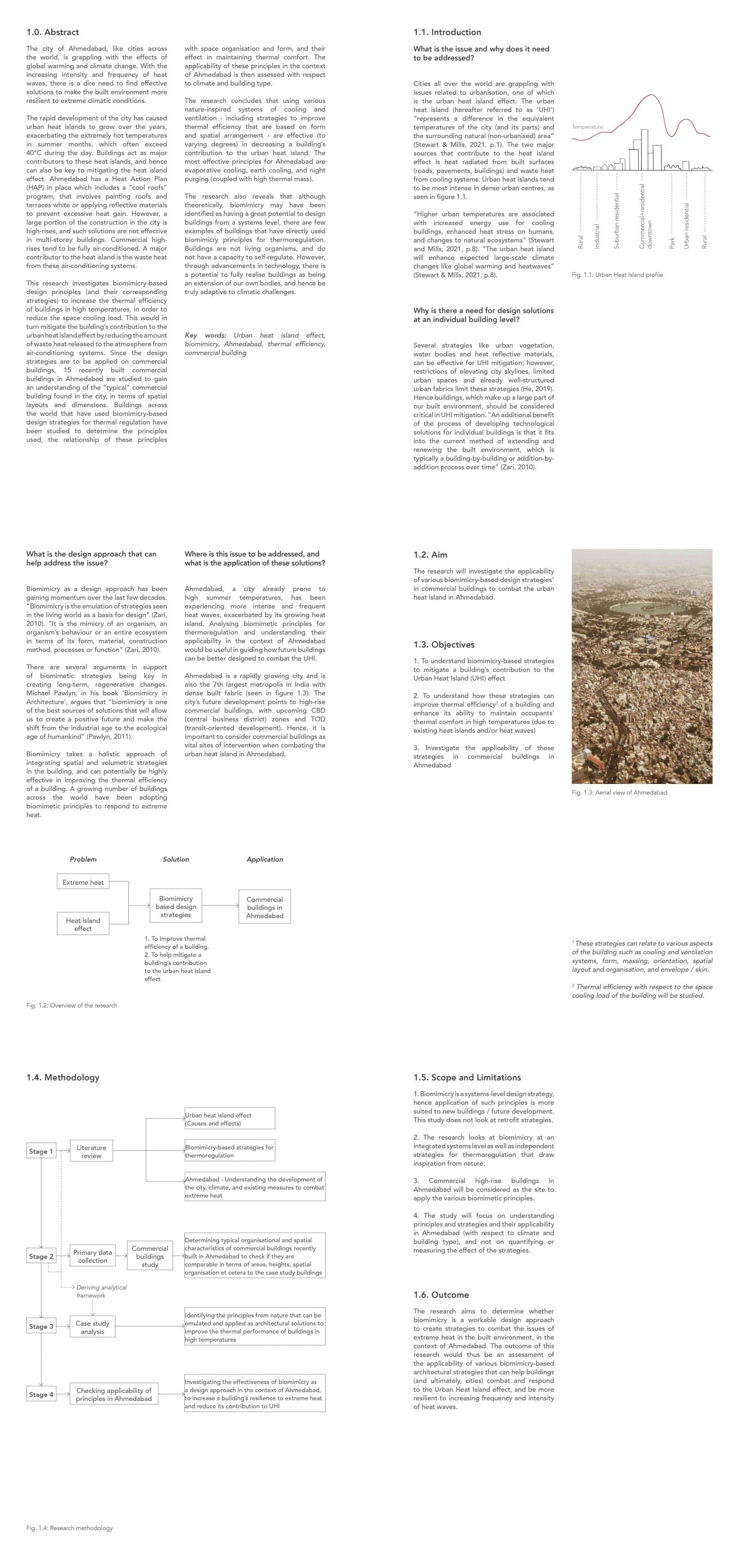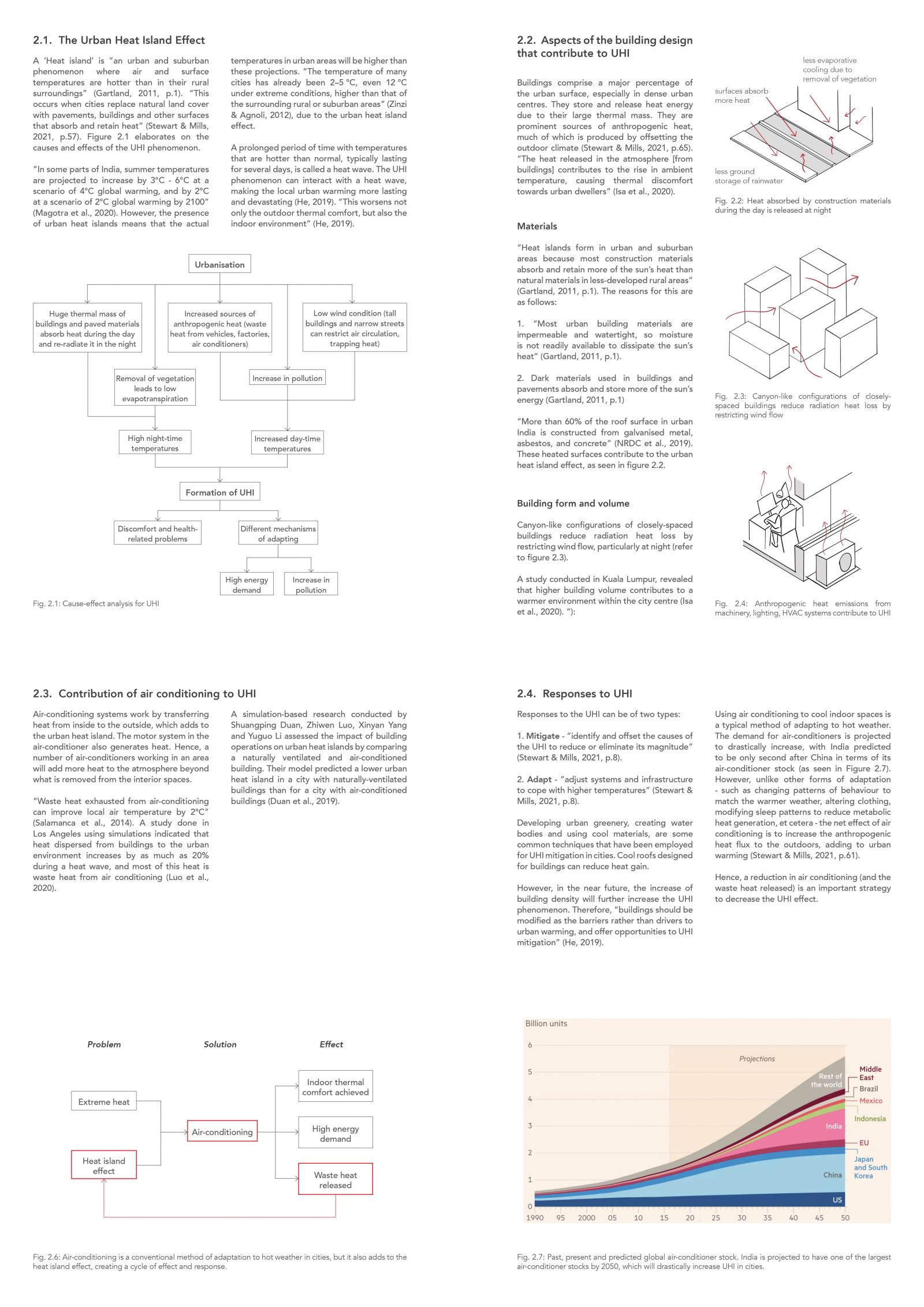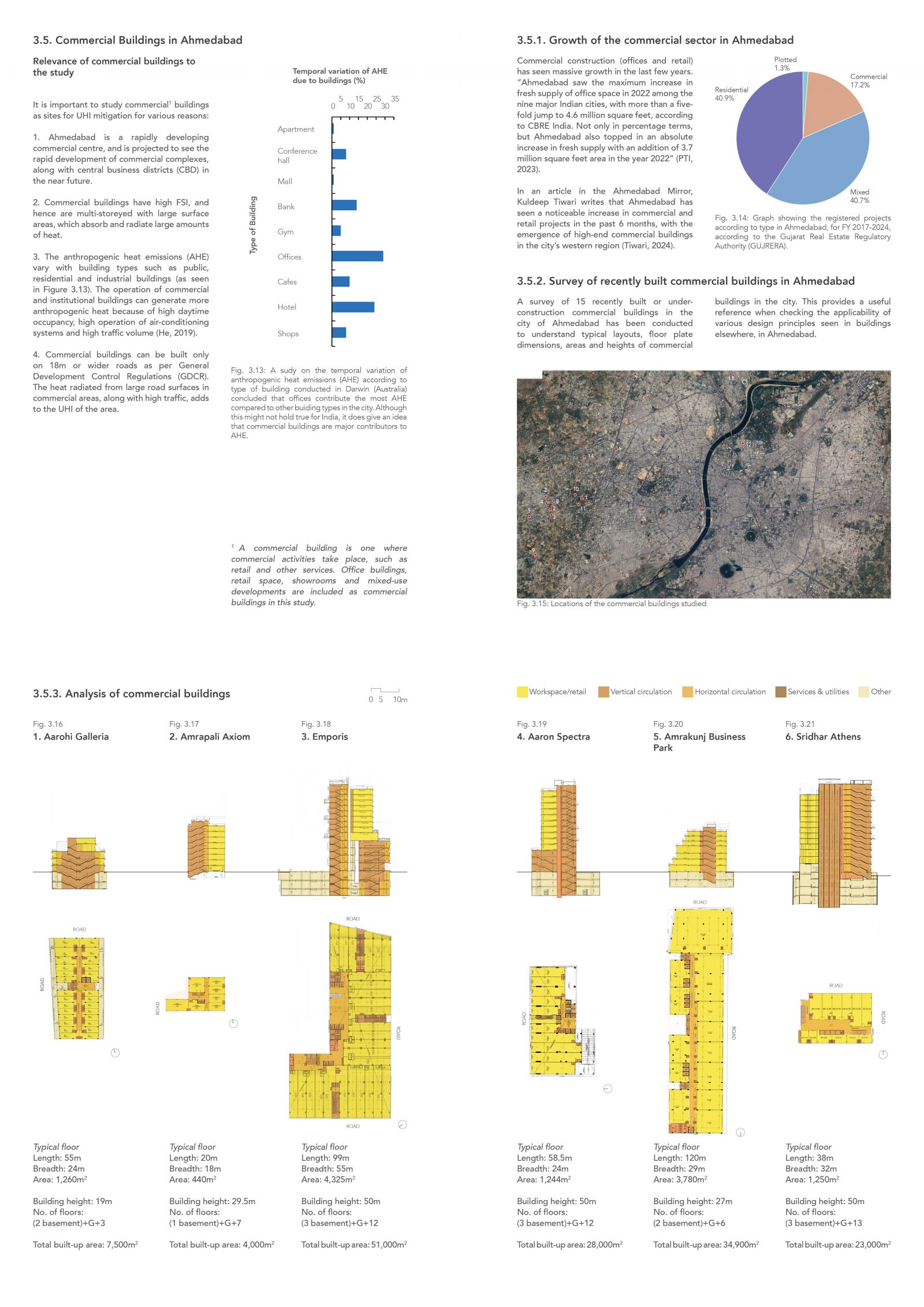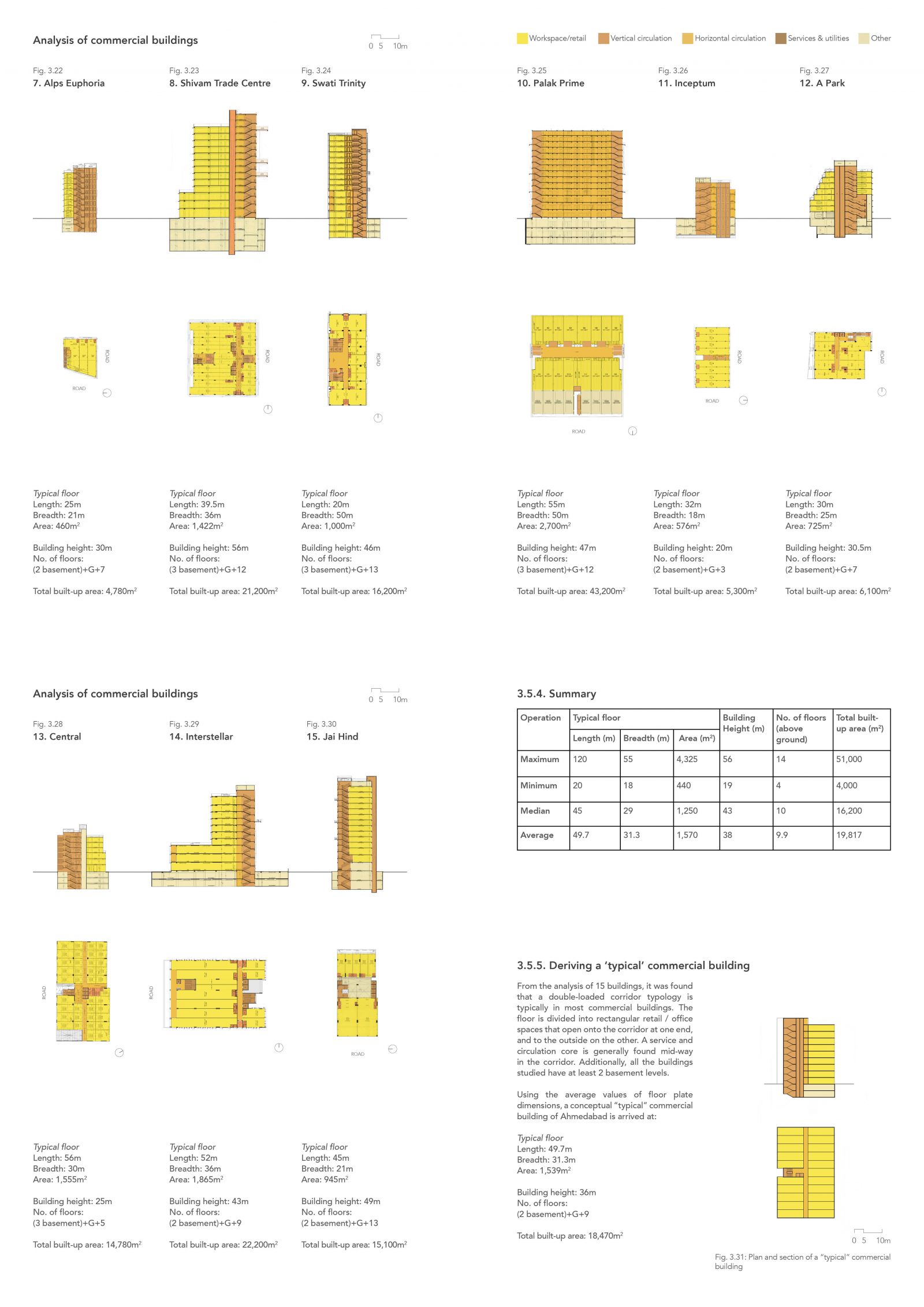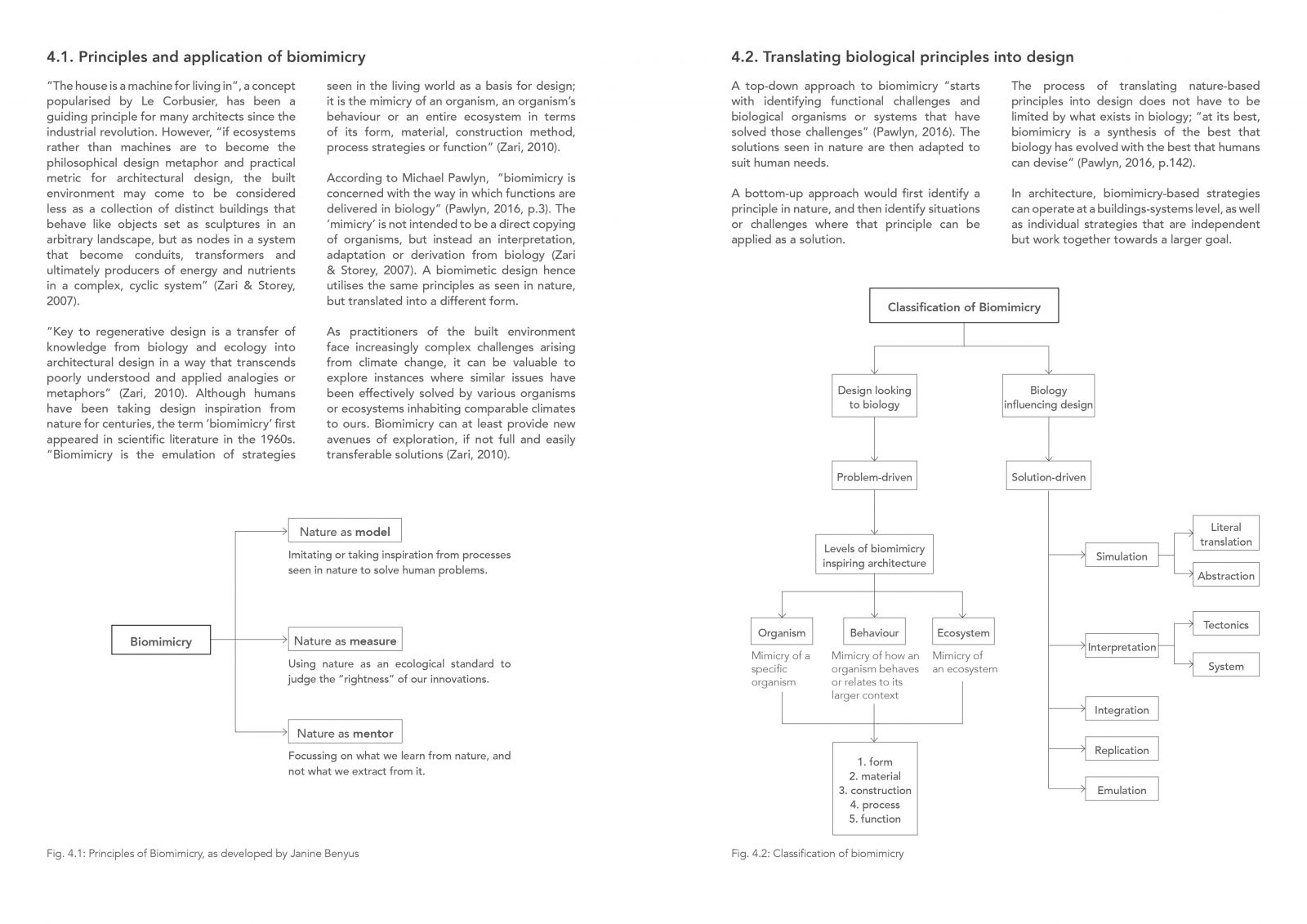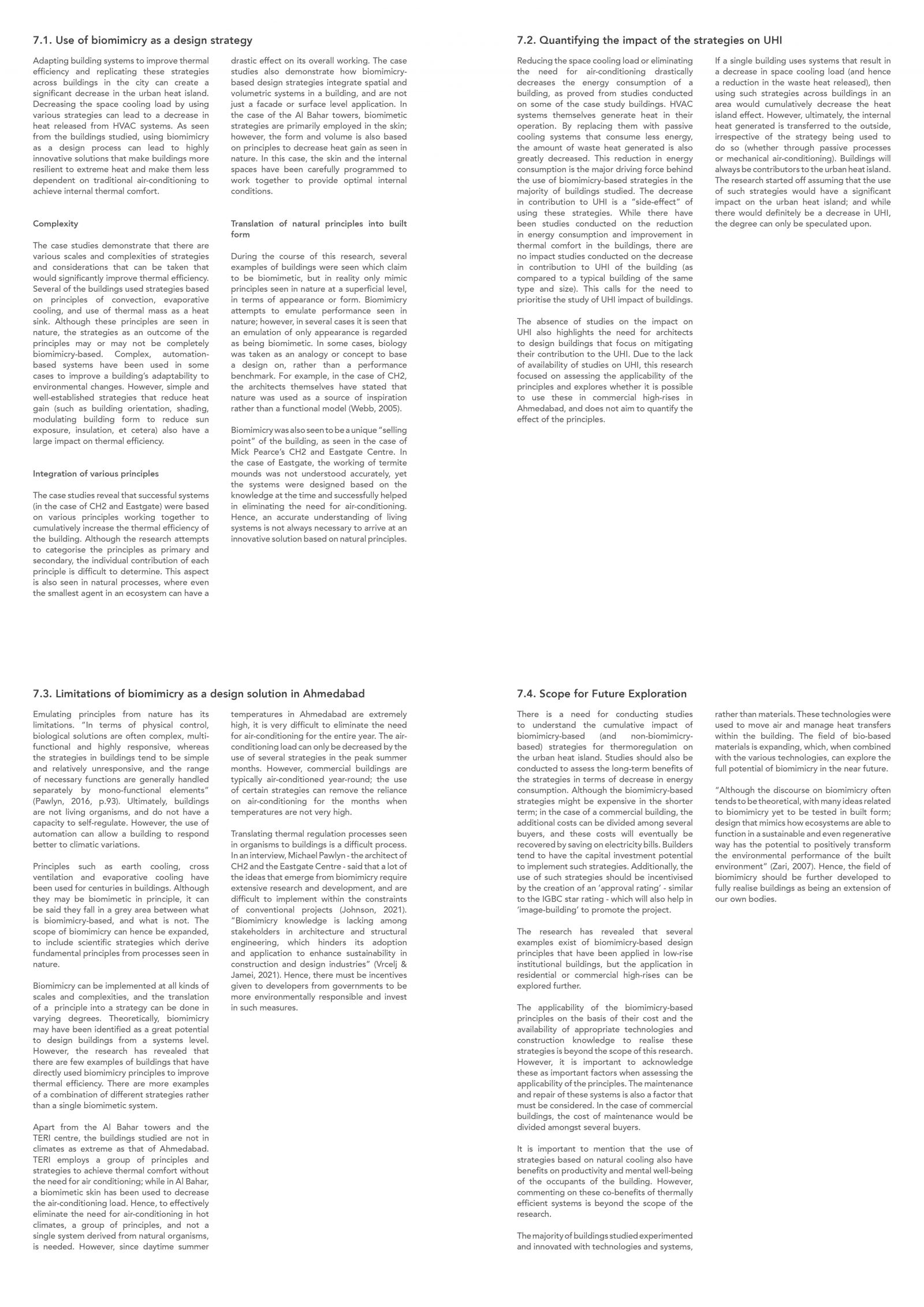Your browser is out-of-date!
For a richer surfing experience on our website, please update your browser. Update my browser now!
For a richer surfing experience on our website, please update your browser. Update my browser now!
The city of Ahmedabad, like cities across the world, is grappling with
the effects of global warming and climate change. With the increasing
intensity and frequency of heat waves, there is a dire need to find
effective solutions to make the built environment more resilient to
extreme climatic conditions.
The rapid development of the city has caused urban heat islands to
grow over the years, exacerbating the extremely hot temperatures in
summer months, which often exceed 40°C during the day. Buildings
act as major contributors to these heat islands, and hence can also
be key to mitigating the heat island effect. Commercial high-rises
tend to be fully air-conditioned. A major contributor to the heat island
is the waste heat from these air-conditioning systems.
This research investigates biomimicry-based design principles (and
their corresponding strategies) to increase the thermal efficiency
of buildings in high temperatures, in order to reduce the space
cooling load. Buildings across the world that have used biomimicry-based design strategies for thermal regulation have been studied to
determine the principles used, the relationship of these principles
with space organisation and form, and their effect in maintaining
thermal comfort. The applicability of these principles in the context of
commercial buildings in Ahmedabad is then assessed with respect
to climate and building type.
The research concludes that using various nature-inspired systems
of cooling and ventilation - including strategies based on form and
spatial arrangement - are effective (to varying degrees) in decreasing
a building’s contribution to the urban heat island.
The research also reveals that although biomimicry may have been
identified as having a great potential to design buildings from a
systems level, there are few examples of buildings that have directly
used biomimicry principles for thermoregulation. Buildings are
not living organisms, and do not have a capacity to self-regulate.
However, through advancements in technology, there is a potential
to fully realise buildings as being an extension of our own bodies,
and hence be truly adaptive to climatic challenges.
